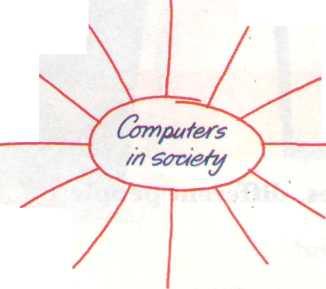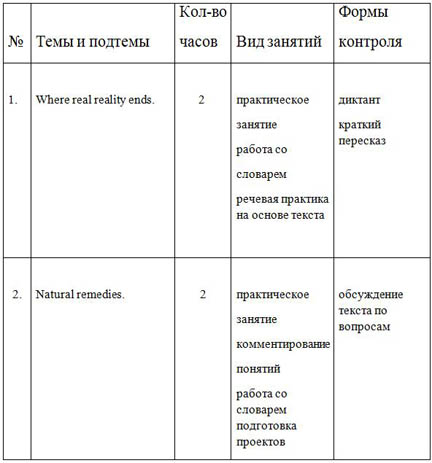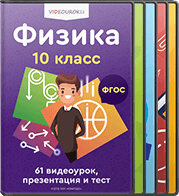Элективный курс для 9 класса
« Мы любим читать по-английски».
Пояснительная записка.
Данная программа разработана в целях организации элективного курса по английскому языку в рамках предпрофильной подготовки. Элективный курс предназначен для учащихся 9 классов. Он разработан для более полной реализации программы основного общего образования по английскому языку, так как приоритетным направлением в образовании в настоящее время является изучение предметов, способствующих социальной адаптации учащихся. Курс содержит тексты по информатике, медицине, экологии и др. Он предусматривает межпредметное восприятие учебного материала, когда английский язык выступает средством получения знаний по другим предметам, что позволяет учащимся лучше подготовиться к экзаменам.
Предложенные тексты охватывают разные виды чтения - ознакомительное, поисковое, изучающее и представляет материал для развития соответствующих умений, а именно:
- ориентироваться в иноязычном тексте, прогнозировать его содержание по заголовку;
- читать аутентичные тексты разных жанров с пониманием основного содержания (определять тему, основную мысль; выделять главные факты, опуская второстепенные; устанавливать логическую последовательность основных фактов текста; читать текст с выборочным пониманием нужной или интересующей информации);
- читать аутентичные тексты разных стилей с полным и точным пониманием, используя различные приемы смысловой переработки текста (языковую догадку, анализ, выборочный перевод), оценивать полученную информацию, выражать свое мнение.
Именно это требует « Образовательный стандарт основного общего образования по иностранному языку», но рекомендованные к использованию УМК содержат недостаточно текстового аутентичного материала и набор методик обучения чтению ограничен. Умение читать, т.е. осуществлять информационную переработку текста, обеспечивает мотивацию в изучении английского языка, т.к. при грамотной организации учебного процесса научить читать и извлекать информацию из текста на иностранном языке можно даже «слабого» ученика. А умение работать с текстом может способствовать развитию умений в других видах речевой деятельности – устной речи, письме. Данная программа содержит текстовый материал и специально подобранные по технологиям предтекстовые и послетектовые упражнения. Содержание материала развивает навыки учащегося в устной и письменной речи.
Цели курса:
- создать условия для успешного прохождения учащимися итоговой аттестации за курс основной школы;
- способствовать овладению разными видами чтения;
- развивать исследовательские умения учащихся;
- подготовить учащихся к поступлению в класс с профильным изучением английского языка.
Задачи курса:
- создать банк специфической лексики;
- повышать эрудицию учащихся;
-способствовать приобретению опыта использования английского языка для углубления и расширения знаний в различных областях науки, техники, медицины и т.д.
- учить читать, переводить, высказываться по различным темам.
Содержание курса.
В содержательном аспекте данный курс имеет выраженную практическую направленность ,так как позволяет осуществить эвристические пробы через участие школьников в учебном проекте , создании мультимедийной презентации ,групповой творческой работе.
Курс предназначен для освоения в 9 классе и представлен в объеме 17 часов аудиторных занятий ( 1 час в неделю в течение одного полугодия или 1 час в 2 недели в течение года).
По окончании курса ученики должны:
- понимать предлагаемые тексты с различной глубиной проникновения в содержание (в зависимости от вида чтения);
- уметь найти необходимую информацию, понять основные факты, отделить главные факты от второстепенных, выполнить ряд заданий;
-расширять лексический запас, осваивать новые понятия, названия, устойчивые выражения;
-создавать проекты и уметь защитить их;
-делать сообщения на английском языке, используя мультимедийные средства.
Методы образовательного взаимодействия.
Поставленные программой курса цели и задачи следует решать через практические занятия, активные методы обучения, такие как беседа, обсуждение, групповая работа, самостоятельный поиск информации, метод проекта. Так же предполагается выбор соответствующих форм текущего и итогового контроля.
Программа курса не дублирует содержание основных учебно-методических курсов по английскому языку, содержит дополнительную информацию, представляющую познавательный интерес для учащихся.
Учебно-тематическое планирование.
|
№ |
Темы и подтемы | Кол-во часов |
Вид занятий | Формы контроля |
|
1. |
Where real reality ends. |
2 |
практическое занятие работа со словарем речевая практика на основе текста
|
диктант краткий пересказ |
|
2. |
Natural remedies. |
2 |
практическое занятие комментирование понятий работа со словарем подготовка проектов |
обсуждение текста по вопросам |
|
3. |
Conventional and alternative medicine. |
1 |
проектная работа |
защита проекта |
|
4. |
Silent messages. |
2 |
практическое занятие работа со словарем речевая практика
|
устный опрос лексических единиц краткий пересказ |
|
|
5. |
Why is everyone different? |
2 |
практическое занятие работа со словарем подготовка проектов |
диктант обсуждение текста составление тезисов |
|
|
|
6. |
Where personality comes from. |
1 |
проектная работа |
защита проекта |
|
|
|
7. |
The changing nature of sport. |
2 |
практическое занятие работа со словарем составление плана текста |
краткий пересказ устный опрос лексических единиц |
|
|
|
8. |
The year 2050. |
2 |
практическое занятие работа со словарем речевая практика на основе текста подготовка презентации |
диктант обсуждение текста по вопросам |
|
|
|
9. |
From the past to the future. |
1 |
презентация |
презентация |
|
|
|
10. |
Обобщающее занятие Test yourself |
2 |
обобщение полученных знаний |
|
|
ИТОГО: 17 часов.
СОДЕРЖАНИЕ ПРОГРАММЫ
Тема 1: Where real reality ends. 2 часа.
Понятие о виртуальной реальности; знакомство со специфической лексикой; использование предлогов; поисковое чтение.
Тема 2: Natural remedies . 2 часа.
Понятие о нетрадиционной медицине; знакомство со специфической лексикой; повторение грамматики Present Perfect Progressive,Present Perfect; подготовка к проекту по теме Сonventional & alternative medicine; изучающее чтение.
Тема 3: Сonventional & alternative medicine. 1 час.
Практическое занятие.
Защита проекта (сообщение цели проекта, реализация проекта, презентация проекта).
Тема 4: Silent messages. 2 часа.
Знакомство с языком жестов; повторение указательных местоимений; изучающее чтение.
Тема 5: Why is everyone different? 2 часа.
Черты характера, понятие об индивидуальности; подготовка к проекту по теме Where personality comes from;поисковое чтение.
Тема 6: Where personality comes from. 1 час.
Практическое занятие.
Защита проекта (сообщение цели проекта, реализация проекта, презентация проекта).
Тема 7: The changing nature of sport. 2 часа.
Важность спорта; спорт в современном мире; изучающее чтение.
Тема 8: The year 2050. 2 часа.
Предсказания футурологов; повторение видовременных форм будущего времени, подготовка к проекту From the past to the future;поисковое чтение.
Тема 9: From the past to the future.1 час.
Практическое занятие.
Презентация.
Тема 10:Test yourself. Обобщение полученных знаний.2 часа.
Приложение 1. WHERE REAL REALITY ENDS.
Technology all around us
1.1 Computers and you
Do you have a computer at home or at school? What do you do with it?
Some people love computers and other people hate them. Do you love them or hate them? Why? Tell the class your ideas.
1.2 Computers in society
Personal computers first appeared in the mid-1970s, and since then they have changed our fives forever. How? What effect have they had? Work in a small group and brainstorm your ideas. Follow these stages:
a Think about the different areas in which we use computers.

b Think about how they are used, c What negative and positive effects have computers had? Think hard! Make two lists.
You could make a poster of your ideas.
How real is reality?
1.1 Some philosophical questions
How do we know that something exists? What proof do we have? Tell the class your ideas.
1.2 Where real reality ends
In the future, computers may change the way we think about reality Read about how virtual reality systems work. Make notes about what the following things do in a virtual reality system and then tell your neighbour.
Have you ever used a virtual reality system
1.3 The future
Read 'What use does it have?' again. How could virtual reality be useful to these people?
(foreign language students, mountain climbers, musicians, astronauts, athletes, police officers, hospital patients)
Can you think of any more uses?
ПРИЛОЖЕНИЕ 2 NATURAL REMEDIES
What do you do when ...?
1.1 Some common problems
Here are some very common problems. What do you do for each one? Tell the class your ideas.
What do you do when ...
... you've cut yourself?
... you've bruised yourself?
. you've got a splinter?
... you've burnt yourself?
… you've got hiccups?
1.2 Some advice
There are many 'home remedies' for the problems in Exercise 1.1. How do you think the things in the picture can help you?

| Problem | Remedy |
| a small cut |
|
| a splinter |
|
| hiccups |
|
| a bruise |
|
| a burn |
|
| a cold |
|
2.1 Conventional and alternative medicine
'Conventional' medicine often involves drugs or surgery. Many people say that this produces side-effects and that there are better, natural ways to cure illness. Do you know the names of any 'alternative' types of medicine? How do they work? Tell the class your ideas.
2.2 Two examples
Look at the pictures in the article. What do you think is happening to the patients?
Work in pairs and each choose a different section to read. Then explain to your partner what is happening in the photograph.
2.3 Some facts
Read the descriptions again. Can you complete this table with information about each form of medicine?
|
| Country of origin | Age | What happens? | How does it work? |
| Acupuncture |
|
|
|
|
| Biofeedback |
|
|
|
|
ПРИЛОЖЕНИЕ 3 Acupuncture
Acupuncture has recently become very popular, but doctors have been using it in China for over two thousand years.
Acupuncture involves pushing needles into the skin at Especial points around the body. Ancient Chinese philosophers believed these points were connected to different organs - such as the heart or lungs - and that
the needles could cure diseases.
Today, acupuncture is used in many countries, and studies show that it works - especially for headaches, backaches and addiction to smoking. Since the 1950s, doctors in China have also been using acupuncture as an anaesthetic in major operations. Patients are awake and know what is happening in the operation but they feel little or no pain.
Chinese philosophers believed that the needles helped to balance forces that they called 'yin' and 'yang'. Today, scientists think that the needles make the body produce a chemical called 'endorphin'. This helps to reduce the feeling of pain.
Biofeedback
Can you control your heartbeat? Can you control your body temperature with your mind? For hundreds of years, holy men in India have been saying this is possible and that they can do it. Scientists used to laugh at these claims, however, until experiments in the USA in the 1950s showed that it is possible. Today, control over our own internal processes is part of a new type of medicine called 'biofeedback'.
Biofeedback uses new technology to help people control their own internal organs. For example, if a person has problems with sleeping, he or she is connected to a special computer that shows the activity of the brain. The person then does mental exercises to try to relax. When brain activity falls, the computer makes a noise. Slowly, the person learns what type of mental exercises can reduce the activity of the brain.
Doctors in many parts of the world have been using biofeedback with great success for many years. It is now a very useful form of medicine for problems with stress, tension, epilepsy, the heart, pain and insomnia.
ПРИЛОЖЕНИЕ 4 SILENT MESSAGES
1.1 How do we communicate?
We can communicate with each other in many different ways. Can you think of ways that we can use? Make two lists.
1.2 Eyes, ears and voice
Which ways to communicate require your ears? Which ones require your eyes? Which ones require your voice?
Silent communication
Most of us use our eyes, ears and voice to help us communicate but there are many people who cannot see or hear or speak.
Read the article and learn about two systems of silent communication. Skim each section quickly and write down what you can remember. Compare with your neighbour.
Questions and answers
Here are some answers that Mr. Hopkins gave the students. What do you think their questions were?
1 By using their hands.
2 No, there are many different sign languages.
3 No, it's quite slow.
4 They read with their fingers.
5 It's a system of dots.
6 Yes, they can use a special pen called a stylus. Compare your questions with the class.
2. Making life easier
People who cannot see or hear or speak find it difficult to do many simple things. In some countries they put Braille on coins and notes, and 'sign' the news on television. What other important things could be in Braille? In what other situations could signing be used?
SILENT
MESSAGES
Communicating with your Hands
In March, Class 10 had a visit from Mr. Jeff Hopkins who works with blind and deaf students.
Mr. Hopkins explained that deaf people can communicate by using their hands. This is called 'signing'. He showed us how to do it and brought a sign language dictionary with him.
He pointed out that there are many kinds of sign language. American sign language, for example, is different from British sign language, and both of these are different from Japanese sign language. In most countries, there are two kinds of signing. The first one is simply a code. Words are translated into signs in the same order as spoilt language. In Britain and USA this is called 'Signed Exact English'. Sometimes, people spell the letters of a word with their hands.
Mr Hopkins explained that this is quite slow. A faster way of getting a message across is to use a sign language. This uses the shape, position and movement of the hands to make a grammar which is different from the spoken language. In English, for example, question words such as 'What' or 'When' come at the beginning of a question, but in sign language they come at the end ('You go last night where?').
Reading with fingers
Mr Hopkins also described how blind people read with their fingers using Braille. On the paper, there are patterns of raised dots which represent letters of the alphabet, numbers and punctuation marks. Different patterns make different letters, which together make words.
Mr Hopkins explained that Braille is not a language because it uses the same grammar the spoken or written language. Blind people can also write their own letters or shopping lists in Braille by using a stylus (a special pen) oh a small metal or plastic sheet.
Check your understanding
Find these phrases in the section about signing What does the underlined word refer to?
1.This is called signing .
2. and both of these are different from Japanese sign language.
3. The first one is simply a code.
4. This uses the shape, position and movement
5. they come at the end.
Can you complete these sentences with the correct preposition? Check in the text.
1 American sign language is different....................................British sign language
2 Deaf people can communicate....... using their hands.
3 In British sign language, a question word comes........................the end of a question.
4 In exact signing, words are translated..............................signs..................................the same
order as spoken language.
ПРИЛОЖЕНИЕ 5 WHY IS EVERYONE DIFFERENT?
Personality
1.1 Personally speaking
We all have our own personalities. How are people different? What different types of personalities are there? Can a person change their personality? Tell the class your ideas.
1.2 Describing personality
Here are some words that you can use to describe a person's personality. Can you put them into pairs of opposites?
( calm extrovert untidy flexible friendly generous introvert mean nervous optimistic reserved stubborn tidy pessimistic)
Why is everyone different?
2.1 A personality quiz
What sort of person are you? Work alone and answer the personality quiz.
Often people see us differently from how we see ourselves. Compare answers with your neighbour. Do you agree with your neighbour's answers?
2.2 Why are we so different?
Read the article quickly. After each paragraph, note down any words or phrases that you don't understand.
Compare your list with your neighbour's and look at the article again. Can you guess the meaning of some of the words?
If there are some words that you can't understand, how important are they? Mark them 'VI' (very important), T (important) or 'NI' (not important)
22


 Получите свидетельство
Получите свидетельство Вход
Вход














 Элективный курс по английскому языку "Мы любим читать по-английски" (0.14 MB)
Элективный курс по английскому языку "Мы любим читать по-английски" (0.14 MB)
 0
0 407
407 24
24 Нравится
0
Нравится
0


